How — And Why — You Should Use Buyer Profiles and Quizzes for Your Store

Imagine if your customers received marketing messages that were completely tailored to their wants and needs. Next, picture how confident they would feel making a purchase at your store after you recommended exactly the right products for them.
This kind of personalization is what keeps customers loyal to your brand — it makes the experience of shopping at your store simple, yet rewarding.
In fact, 78% of U.S. shoppers said that tailored-to-them, relevant content from brands or companies increases their purchase activity.
In order to get started with ecommerce personalization, you’ll first need to ethically collect data from your customers. This includes learning their contact information, needs, preferences, demographics, behaviors and more. Personalization is about using customer profile data to ensure every interaction with your brand is tailored and individualized.
Many marketers ask themselves how they can start collecting this data. Thankfully, there’s a fun solution: an ecommerce quiz.
In this article, we’ll share how you can use this ecommerce tool in a variety of ways and industries to connect with customers. Then, we’ll share how to use that information to personalize their experiences.
Why Should Ecommerce Marketers Use a Quiz?
Seventy-five percent of marketers reported in a survey that non-gated interactive content can result in a higher degree of lead nurturing. And 87% of U.S. customers are willing to have details of their activity tracked if it means more personalized rewards and brand experiences.
This is why quizzes have become an excellent tool to collect more email, SMS and Facebook Messenger opt-ins: They’re prominently displayed on your site or platform of choice. Plus, they’re engaging — your customer might hesitate to fill out a Google survey, but an interactive quiz is appealing.
Another important feature? You can collect buyer profile data based on customers’ quiz answers to use for personalized messaging and retargeting. This is where the real magic happens.
Before we continue with quizzes, let’s go over buyer profiles.
What are Buyer Profiles?
A buyer profile is based on your real-life customer data. It’s not a fictional representation of a consumer, like a buyer persona.
Collecting data about a customer’s likes, dislikes, preferences and needs gives you a full profile about who that customer truly is.
How Do You Organize Buyer Profiles?
First, segment each buyer profile into a group of other like-minded people.
Then, retarget campaigns and build lookalike audiences to target similar buyer personas. Include opt-ins during the quiz to pair buyer profile data to identify information — such as an email, SMS or Facebook Messenger opt-in — to target your marketing.
What Type of Data is Included in a Buyer Profile?
There is an endless amount of data that you can collect with an ecommerce quiz, which can be broken down by type. This will help you understand where some of your customers have similarities and where they differ, so you can create a unique experience for each one.
Here are some of the types you can start to collect using a quiz:
- Qualitative data: This data is about a customer’s preferences, pain points and motivations. It shows you how your customers feel about your products and what product they like best from your brand. It also tells you what issues they’re currently facing so you can recommend products that help.
- Demographic data: This data shares a customer’s age, gender, location or the source from which they discovered your brand.
- Engagement data: This data tells you how a customer interacts with your business and the touchpoints they take. For example, you can see if a customer exited out of your quiz before they completed it, what page they exited from, what buttons and answers in the quiz they clicked and what products they added to their cart from the quiz results.
There’s also attitudinal data (what customers think about your business),descriptive data (their lifestyle habits and behaviors) and contact data (typically, their email address or phone number).
How to Use Buyer Profiles and Quizzes to Find Out More About Your Customer — And Get Them to Buy
To capture this consumer information, you can get as creative as you want. Here’s what one beauty brand quizzed site visitors on:

There are two reasons for this question. For one, this is a fun additional question for customers to reminisce about the past. But, it’s also a subtle way of understanding a customer’s potential age range.
It’s a creative alternative to capture demographic data without blatantly asking the customer for their age.
Of course, you can use quizzes to be more dialed-in to your products, too. For instance, this same beauty brand (in the same quiz) also asks users about their eye shape, lashes length and lash preferences:
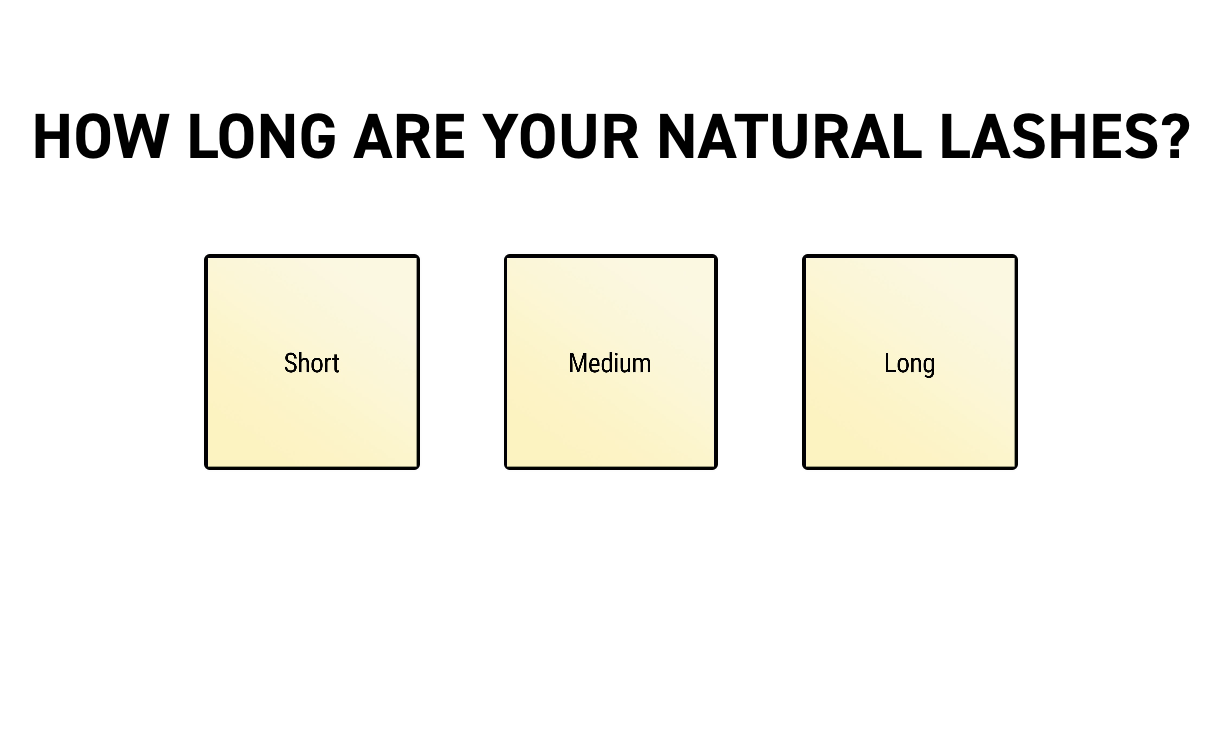
Before a user gets their results, they’ll need to enter their email address (Bonus: They’ll get 15% off their first order!):
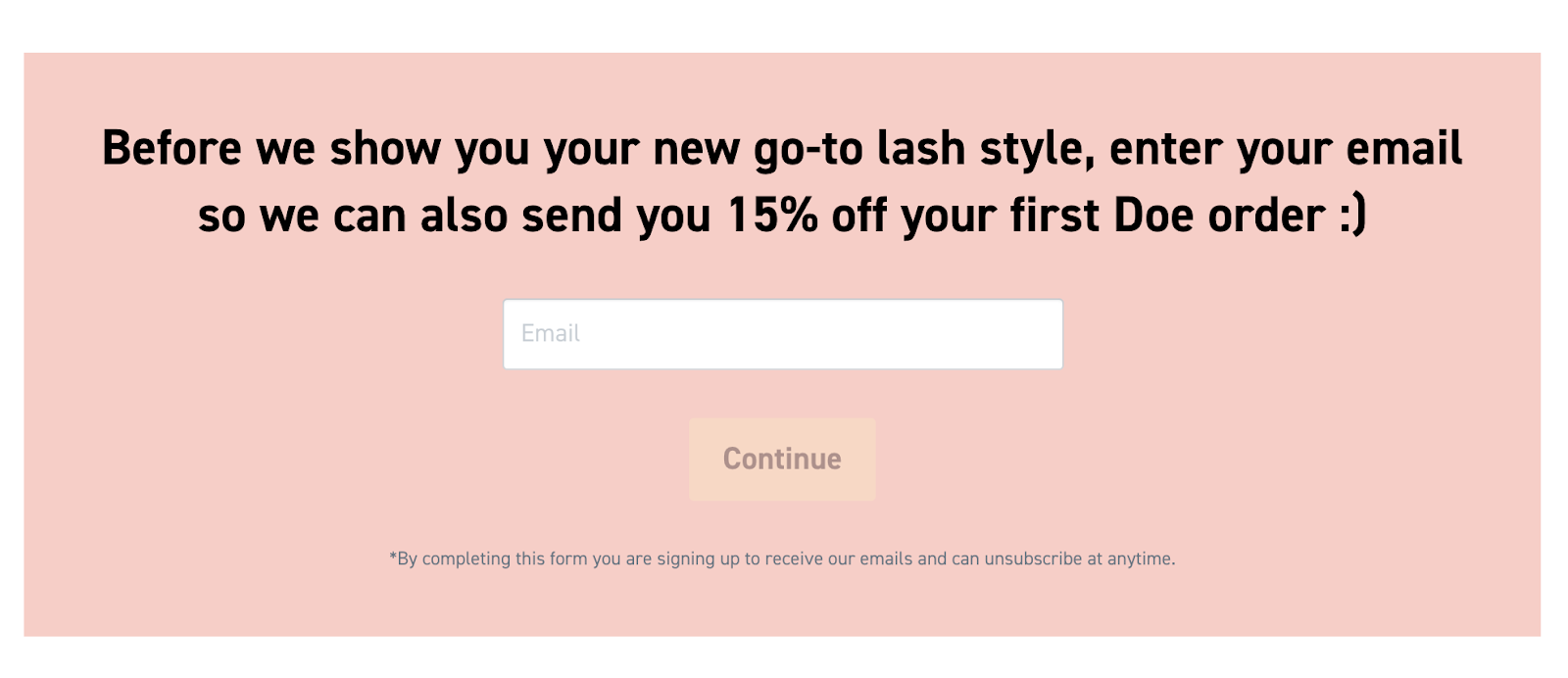
From there, they’re presented with an ideal set of lashes based on their quiz results — which they can add directly to their shopping cart. On top of nabbing a potential sale and new customer, your store will also have solid data on the person making the purchase.
Once you have this information, you can use it to better serve and delight your users.
4 Ways to Use Buyer Profile Data to Increase Revenue
After you’ve started collecting buyer profile data, the next step is to organize it in a way that works for your business.
Once you have a plan, start using your buyer profiles to offer a more-personalized ecommerce shopping experience. Here are a few things you should do:
1. Upsell and Cross-Sell Relevant Products
When a customer engages with your quiz to find a product, you’ll know what they need based on the answers they gave in the quiz.
The recommended product on the quiz results page is a great place to also upsell or cross-sell relevant products.
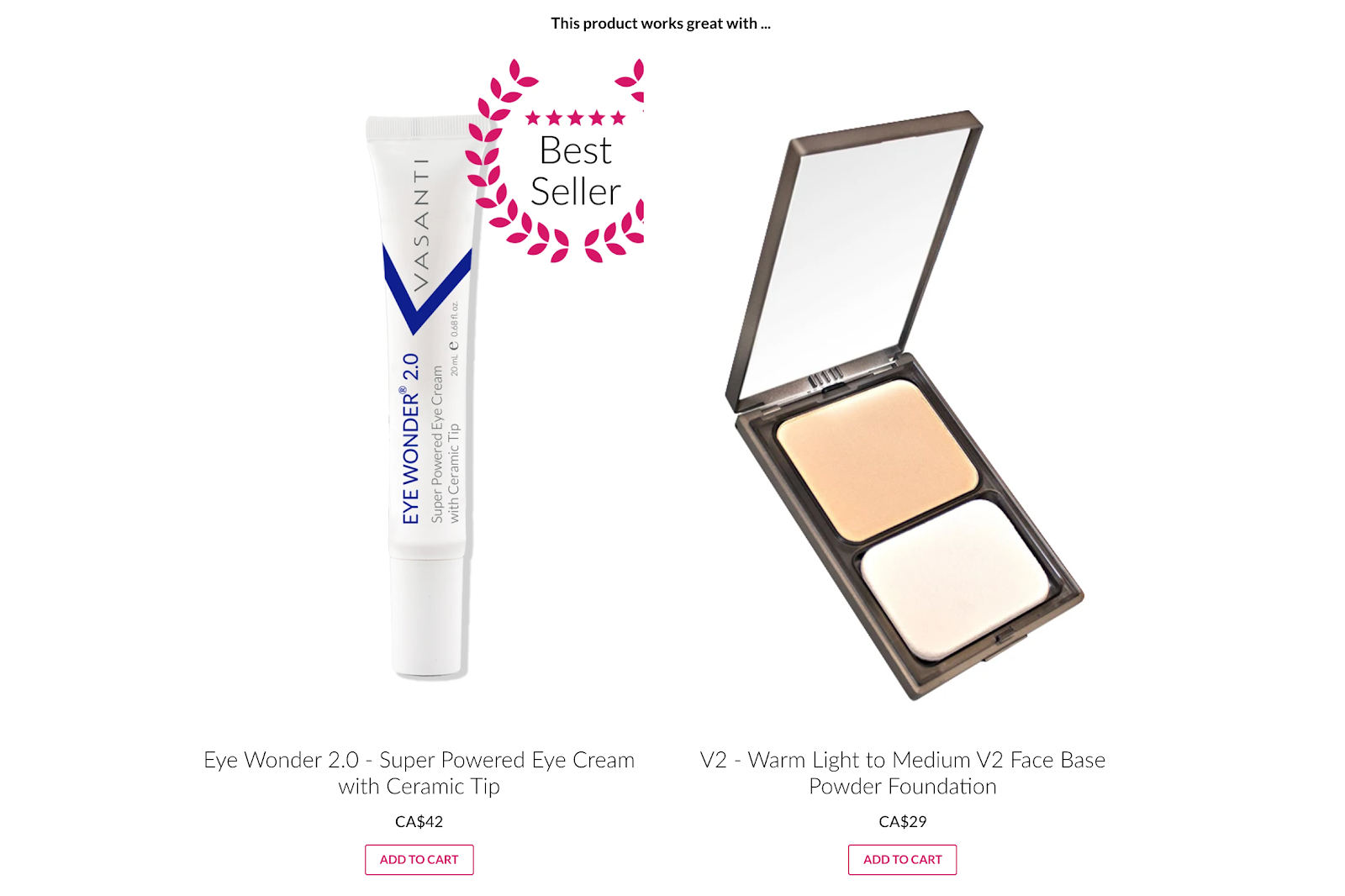
2. Provide Accurate Product Recommendations Through Your Marketing Channels
No longer face the challenge of recommending products based on educated guesses about who your customers are. By collecting buyer profile data, you’ll know exactly what every customer is looking for and what they need to be satisfied.
Sync your buyer profile data across all channels to personalize your omnichannel experience. Target ads toward specific groups and send highly personalized email, SMS and Messenger campaigns. This will increase conversions drastically when the messages are meaningful and provide value.
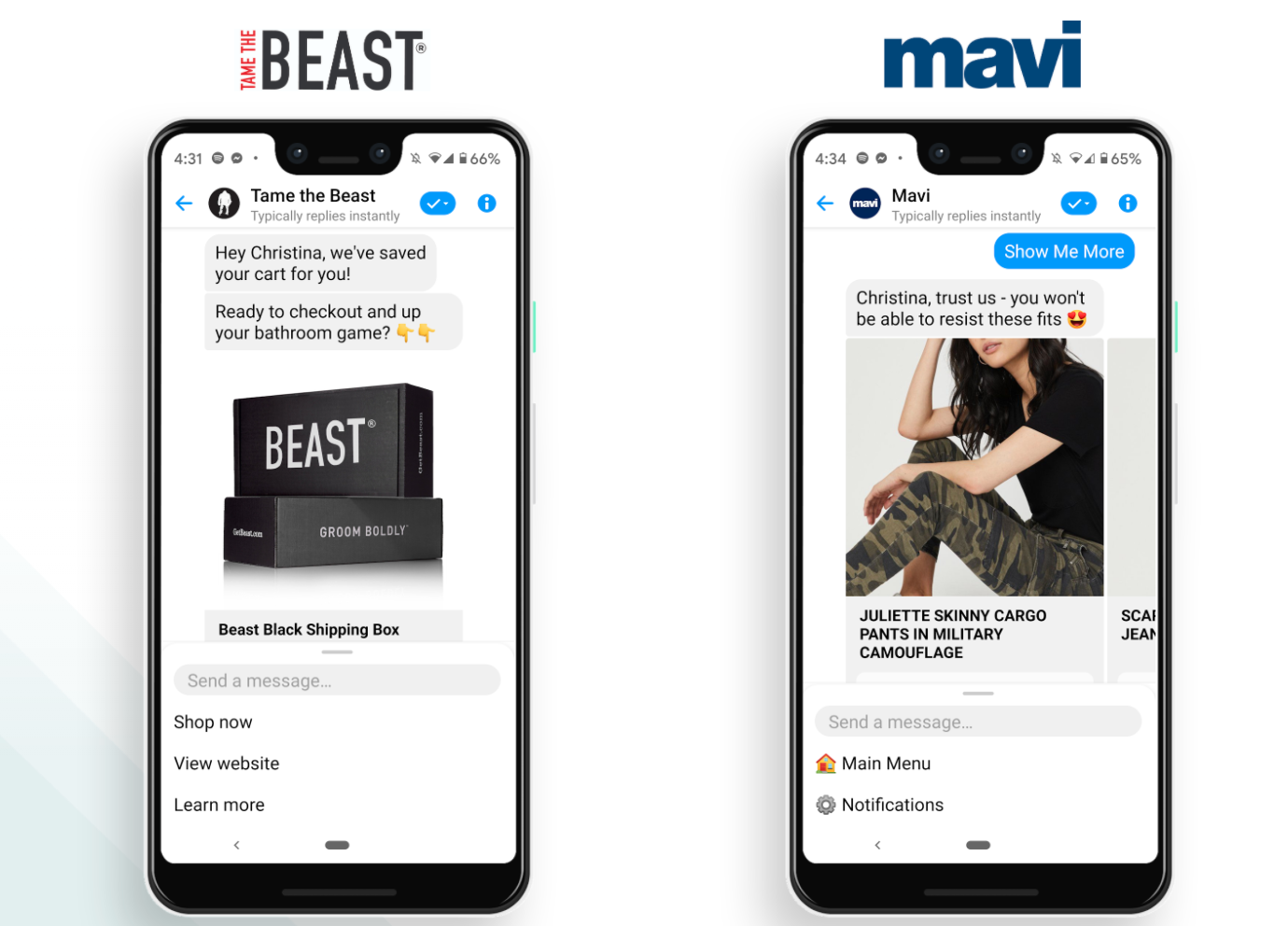
3. Refine Your Messaging Across All Platforms
Use your data to ensure you share the most-impactful messaging across all your channels. If you find out the majority of your customers are 40-year-old women who want to reduce the appearance of wrinkles on their face, you should use messaging around aging and skincare to grab their attention.
Personalize the entire experience for a better effect. From social copy, ads, email, SMS, Facebook Messenger, website copy — you name it, you should personalize it based on your buyer profiles.
4. Create Content That Matches Buyer Profile Pain Points and Intent
Once you understand your customers’ challenges, you should build value-added and educational content to help them.
For example, the Canadian Mattress company, Polysleep, understands that its ideal buyers are likely comparing it with other well-known brands. To help with this, the company built comparison conversations through Facebook Messenger.
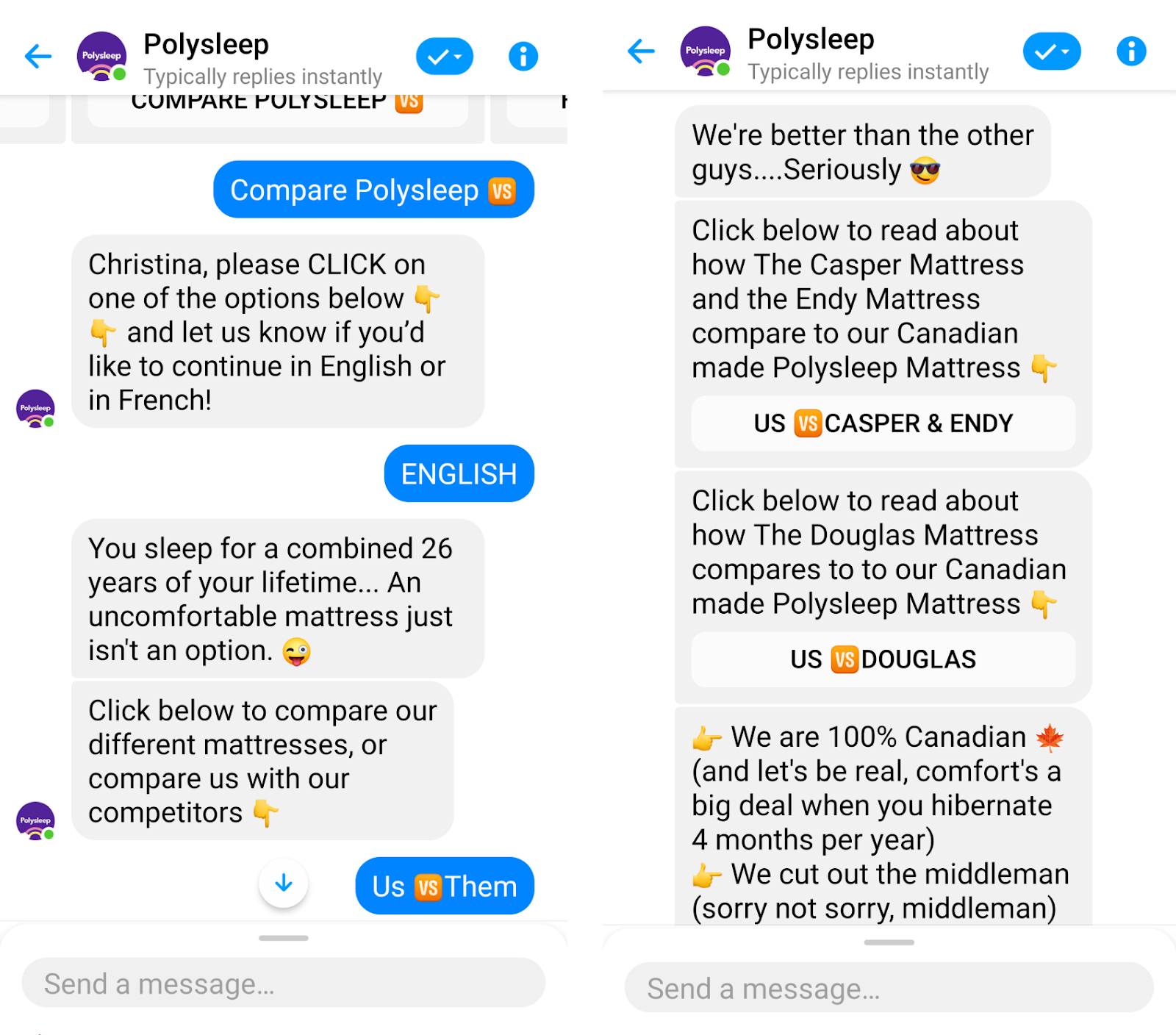
The conversations then link to blog posts Polysleep has created to give visitors more information about why they should choose the Polysleep mattress over any other brand.
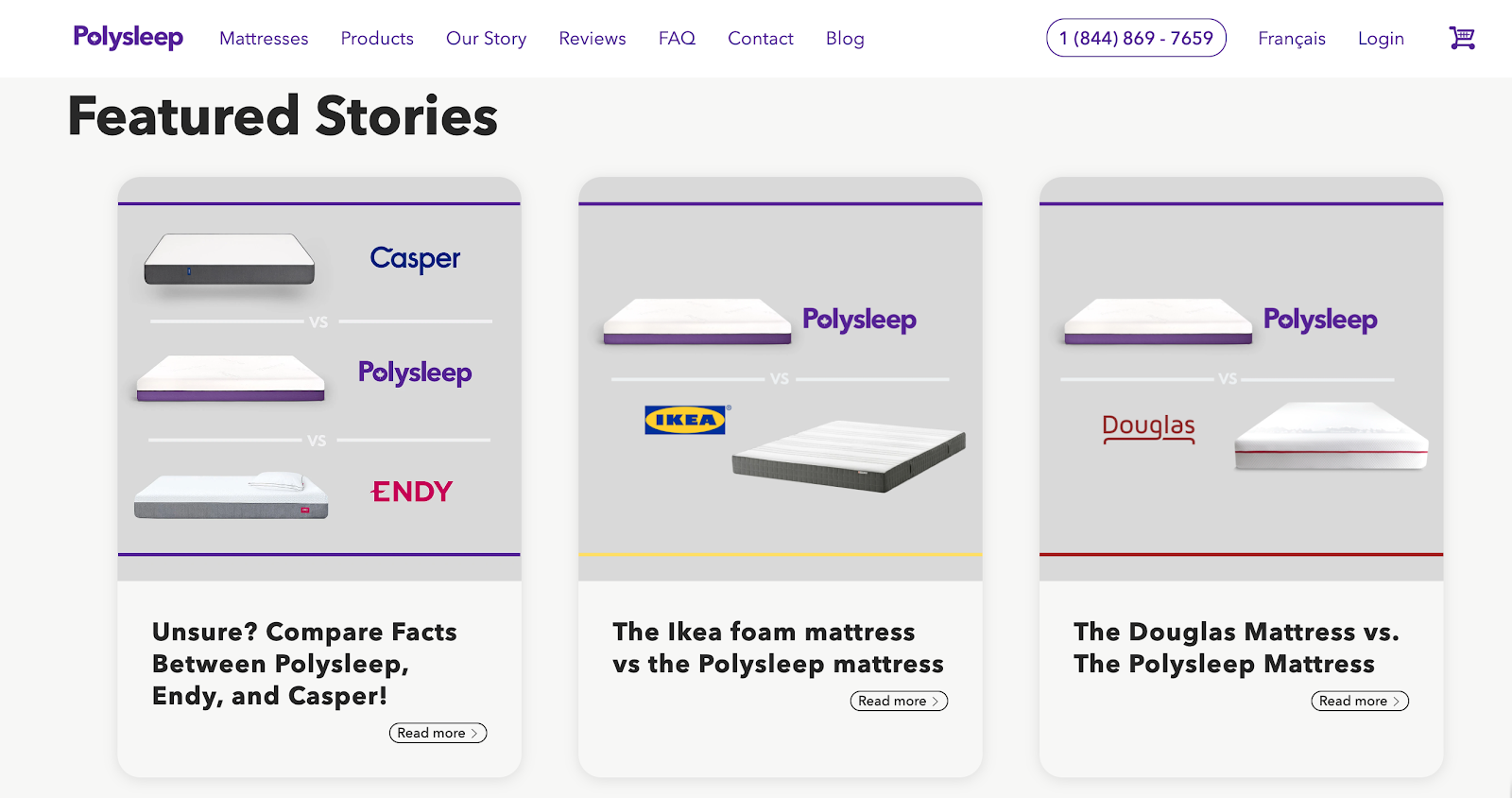
Keep in mind, lack of content relevancy generates 83% lower response rates in the average marketing campaign. You can create this type of educational content when you know what information your customers are looking for.
Personalize Your Ecommerce Marketing
Using tools like quizzes to build buyer profiles is an ecommerce game-changer.
Once you build your buyer profiles, you’ll offer an online experience that feels just as real as being in a store. You’ll be able to intelligently recommend products, show customers you’re listening to their needs and offer an unmatched, personalized experience.
If you want to learn more about collecting this data to personalize your customer experiences, you can download Octane AI’s 400+ page playbook on personalization for ecommerce marketers for free here.

Tina Donati
Tina Donati is a content marketing specialist at Octane AI: an all-in-one platform for engaging quizzes, data collection and personalized Facebook Messenger and SMS automation. Thousands of Shopify and Shopify Plus merchants use Octane AI to connect, convert and retain customers by personalizing the customer journey and giving customers the confidence to purchase.



